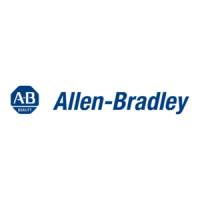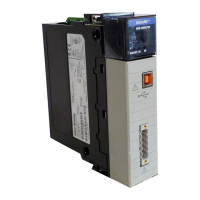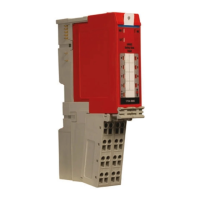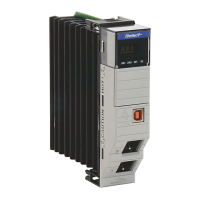Rockwell Automation Publication 2100-IN012G-EN-P - August 2016 103
Maintenance Chapter 9
For installation of unit, refer to Installing Units with Vertical Operating
Handles, publication 2100-IN014
.
If the unit requires lubrication because of corrosion (for example, a sulfuric
environment), replacing the unit disconnect can be required to avoid
overheating conditions. Lubrication can temporarily resolve overheating,
however replacing the disconnect switch is the ideal, long-term solution.
Use Thermal Infrared or
Other Temperature
Measurement Techniques for
Preventive Maintenance
Use the following procedure when using thermal infrared or other temperature
measurement techniques as part of a periodic preventative maintenance
program on CENTERLINE® 2100 Low Voltage MCCs.
1. Use test equipment to determine the temperature differential and the
temperature rise of accessible components within the unit.
2. Determine the services and repair recommendations based on the
temperature category in the following guidance chart.
ATTENTION: Temperature measuring techniques are often performed with
the units fully energized and the doors and covers open.
Use extreme caution when performing these measurements so that energized
parts are not shorted.
If care is not taken, electrical shock, severe injury or death can result.
When working on or near energized electrical equipment, follow established
electrical safety-related work practices. Refer to NFPA 70E Standard for Electrical
Safety in the Workplace.
Table 13 - Temperature Guidance
Category Temperature
Differential
(1)
Temperature
Rise
(2)
Repair/Service
°C °F °C °F Service Interval Recommended Action
1 < 10° < 18° < 70° < 126° No service or repair required. See step 1
below.
2 10°...25° 18°...45° 70°...100° 126°...180° Service or repair the unit at next maintenance schedule (not greater
than six months but continue monitoring as a part of preventive
maintenance.)
See step 2
below.
3 25°...50° 45°...90° 100°...115° 180°...207° Service or repair the unit within the next two weeks and monitor the
unit at the next maintenance interval.
4 > 50° > 90° > 115° > 207° Shutdown the unit and repair. Verify that the temperature is reduced
after re-energization.
(1) Temperature (measured or rise) differential between adjacent phases or like elements. Load between phases must be balanced with a normal variation not exceeding seven percent.
(2) Measured temperature less ambient.
Due to difficulty obtaining accurate infrared temperature measurements from highly reflective surfaces, we recommend using temperature differential readings in determining the Service/Repair
guidelines, for example, emissivity of tin or silver plated material.
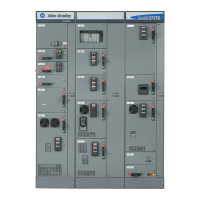
